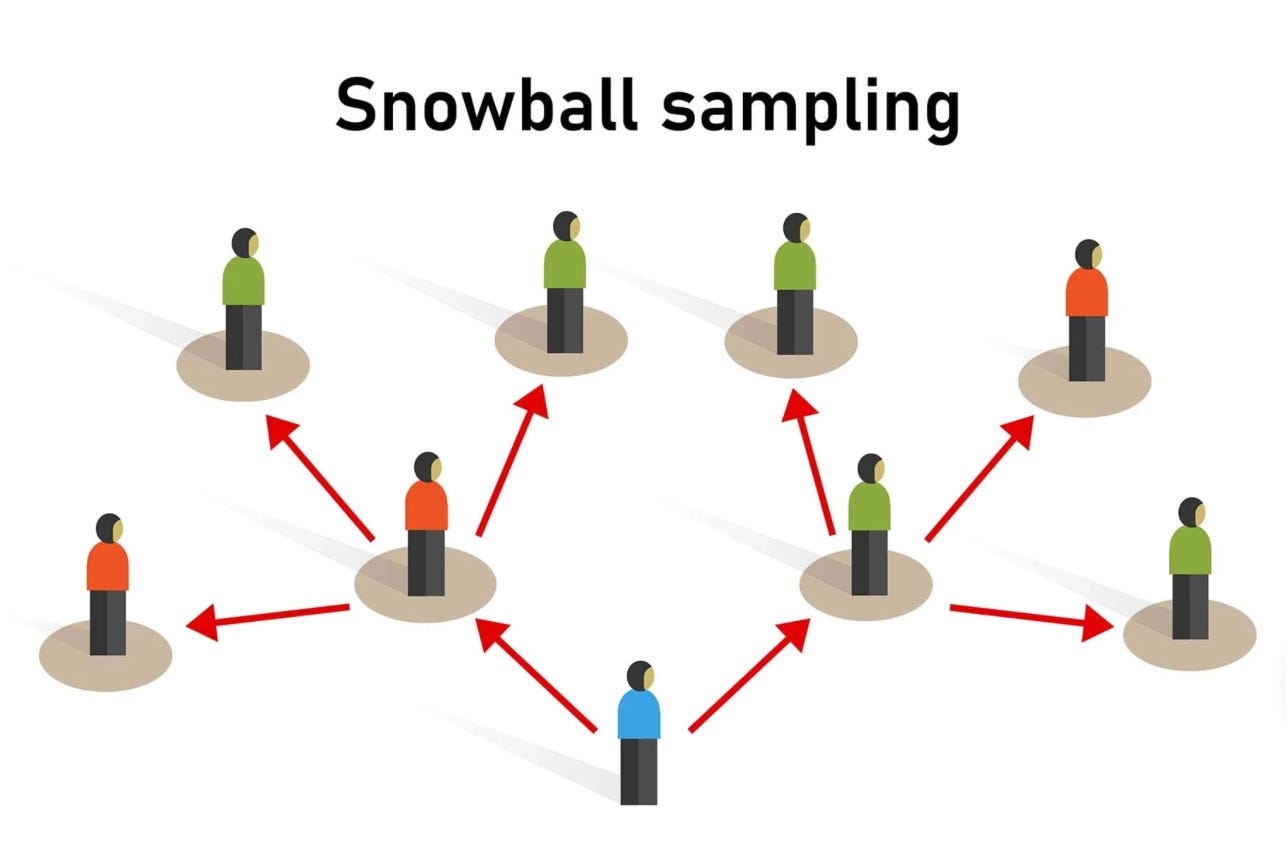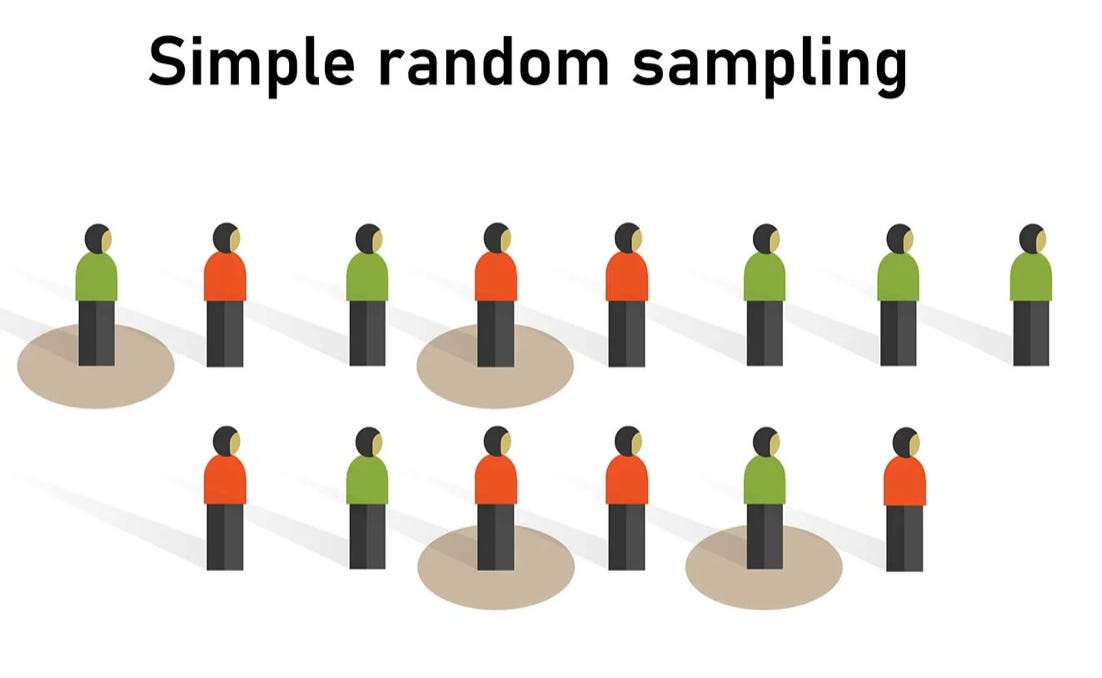Sampling on Thin Ice: The Quirky World of Snowball Sampling
Snowball sampling - an unconventional yet effective research method. Read more to understand about its intuition & use-cases!
I am learning introductory statistics again! And this is the third time in my life. The first was in school, where I memorised the formulae for mean/median/mode like my life depended on it. Little did I know most public policies are drafted with knowing just the mean/median/mode. But the exclamation point in the first sentence is a happy one. Each time I revisit the basics of stats, I hear the music. Do you know the feeling when you understand a concept so intuitively that you can ‘hear the music’, and ‘see the subject come alive’? It’s like daydreaming, but make it intellectual.
If you are not aware of statistics, It is (mostly) a method wherein we understand more about the whole world by only investigating a very small population. Sounds scammy, no? Keep reading, and you’ll see why it is genius. So, if chosen randomly, a small sample can mimic the patterns of the entirety of the population with very low error (that error is reported and can be accounted for too). So, you’ll often see the word ‘random’ holding much weight in these introductory stats classes.
In the vast world of sampling, randomness is God because it is devoid of human preferences. It is unbiased! But that does not mean that non-random means of collecting data are bullshit. So, in this edition of my newsletter, I want to talk about ‘snowball sampling’, a non-random sampling method that is underrated and unknown by many.
Snowball Sampling is when you rely on your existing survey participant(s) to refer you to other subjects who may be fit for your survey. It is not random. It is not unbiased. But it is unique. And it is valuable. It is instrumental when you are dealing with hard-to-reach populations. Look at the picture below to ‘hear the music.’
Let me illustrate with a few examples: Say you want to know the experiences of the homeless people in a city. You’d probably start with one person willing to talk to you and ask them about more homeless friends of theirs who are possibly open to being interviewed, and you’d continue so on. Or if you want to write a biography for someone. You’d start with them or their closest relative and then work your way deeper into the protagonists’ connections one by one.
One of the most recent, poignant, yet unapparent examples is that of COVID-19. To contain the spread of COVID, health workers have to identify case 0, ask them about the network of individuals with whom they had contact, and then rush to quarantine that set too. This is how all countries tried to contain the spread of the disease.
The most fun part about snowball sampling is the genius of the name. It’s analogous to how a small snowball rolls around snow, collecting more and more of it to become bigger. Your sample grows the same way; one person points you in the right direction, and your sample grows and grows. But as is the case with snowballs, this sampling process can collect unwanted objects like twigs and dirt, and your sample is also not free from drawbacks. Participants tend to refer to people like themselves and thus include a lot of personal bias in your research that cannot be accounted for. It is also hard to quantitatively analyse this data as one can never estimate the true extent of the sampling error.
Snowball sampling methods work best when the traditional methods fall short. Whether studying hidden communities, tracking diseases, or diving into niche interests, snowball sampling is your unconventional companion, helping you navigate the icy terrain of data collection.
Drop a <3 if you liked the essay, it helps the article get discovered by more people!






❤️
A very lucid and simple explanation for a very important concept!